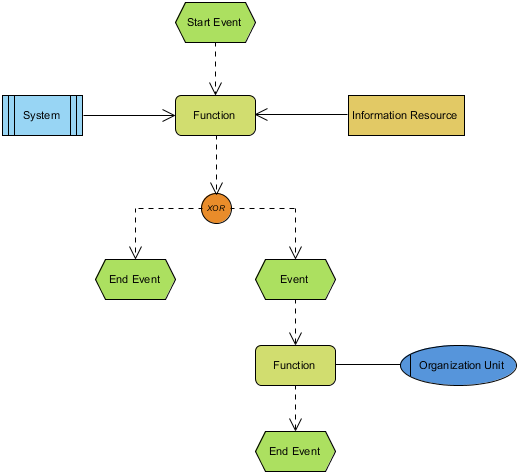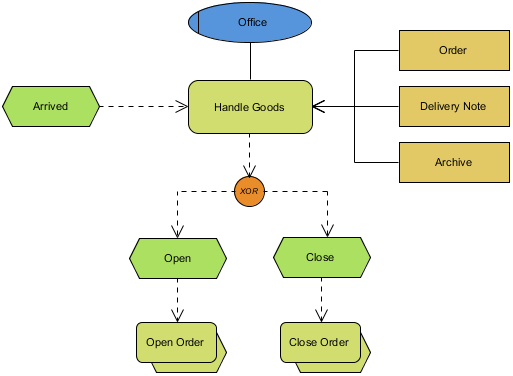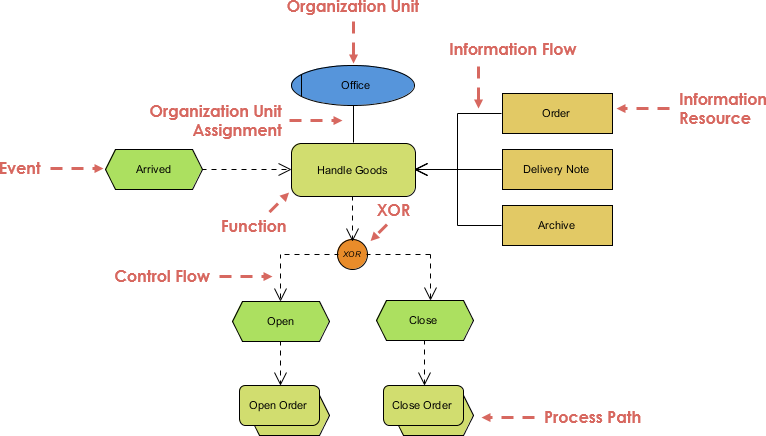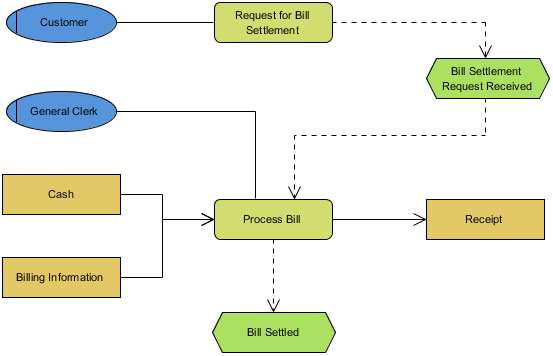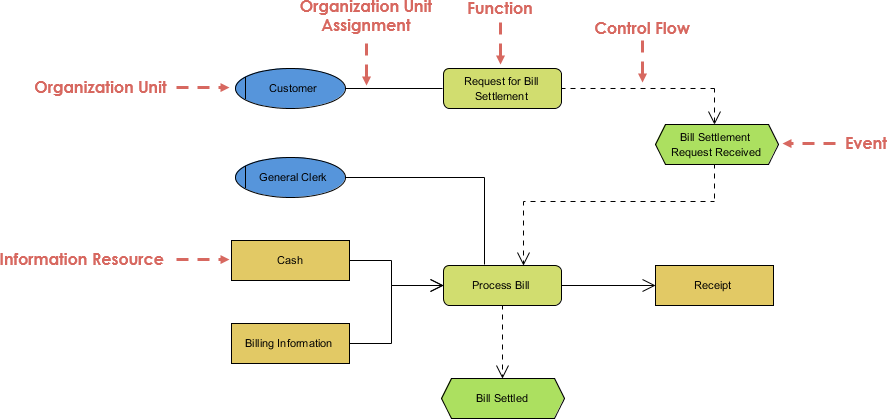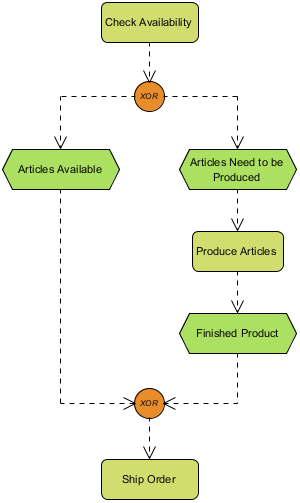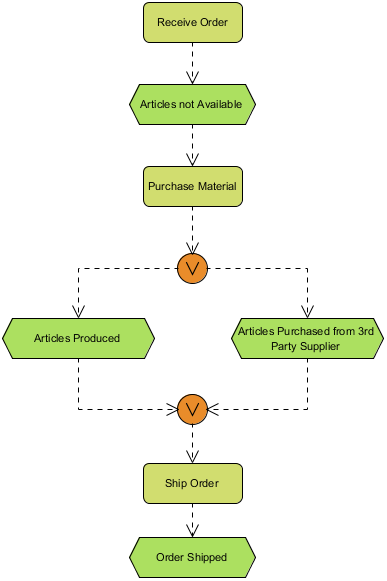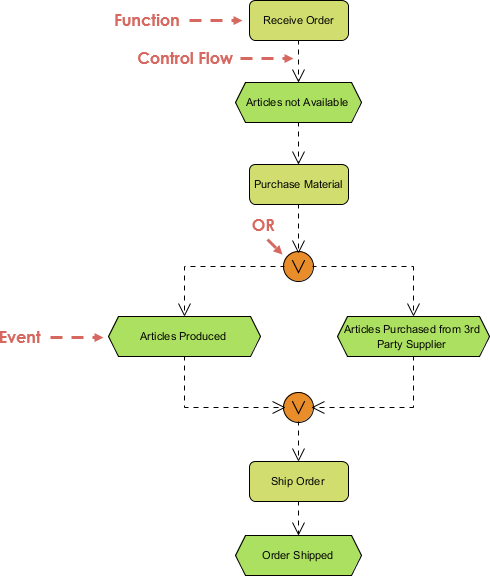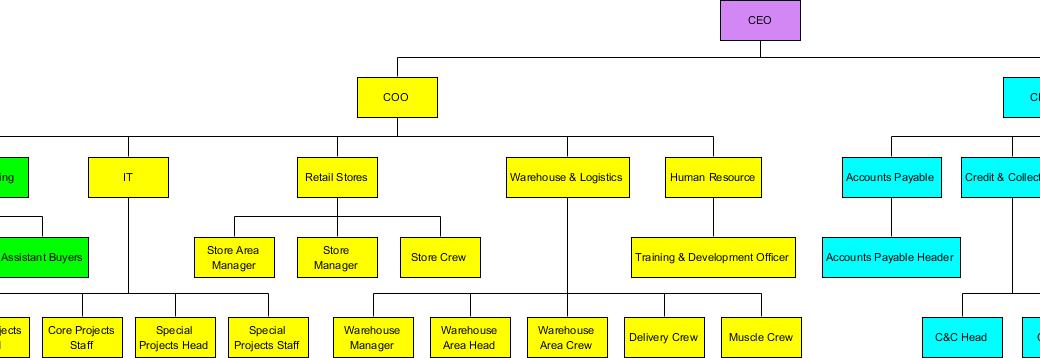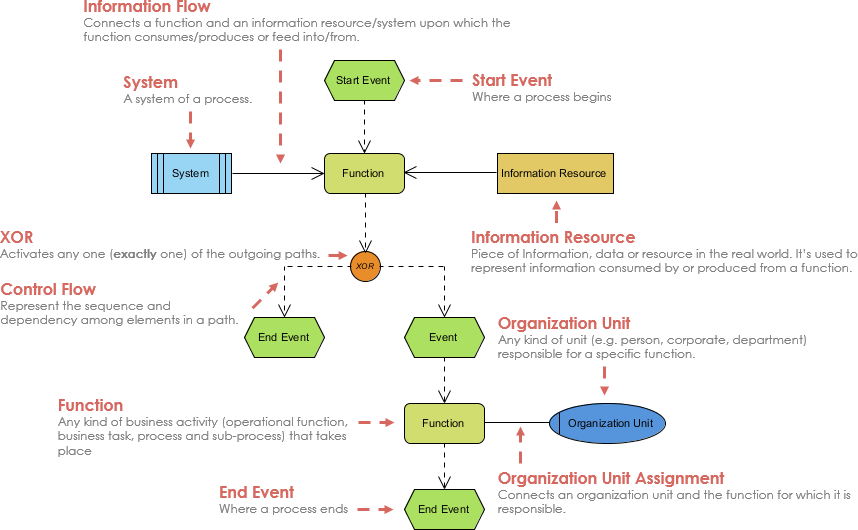
An event-driven process chain (EPC) is a type of flowchart used for business process modelling. EPCs can be used for configuring an enterprise resource planning (ERP) implementation, and for business process improvement. Usage for control of work share with instances of autonomous workflows in workflow management is possible, but not yet implemented.
Here is a simple EPC diagram example that shows the use of annotation in the diagram.
Import into your Project
Open diagram in Visual Paradigm [?]Copy the URL below, paste it in the Open Project windows of Visual Paradigm and press Enter to open it |
Posted by:
